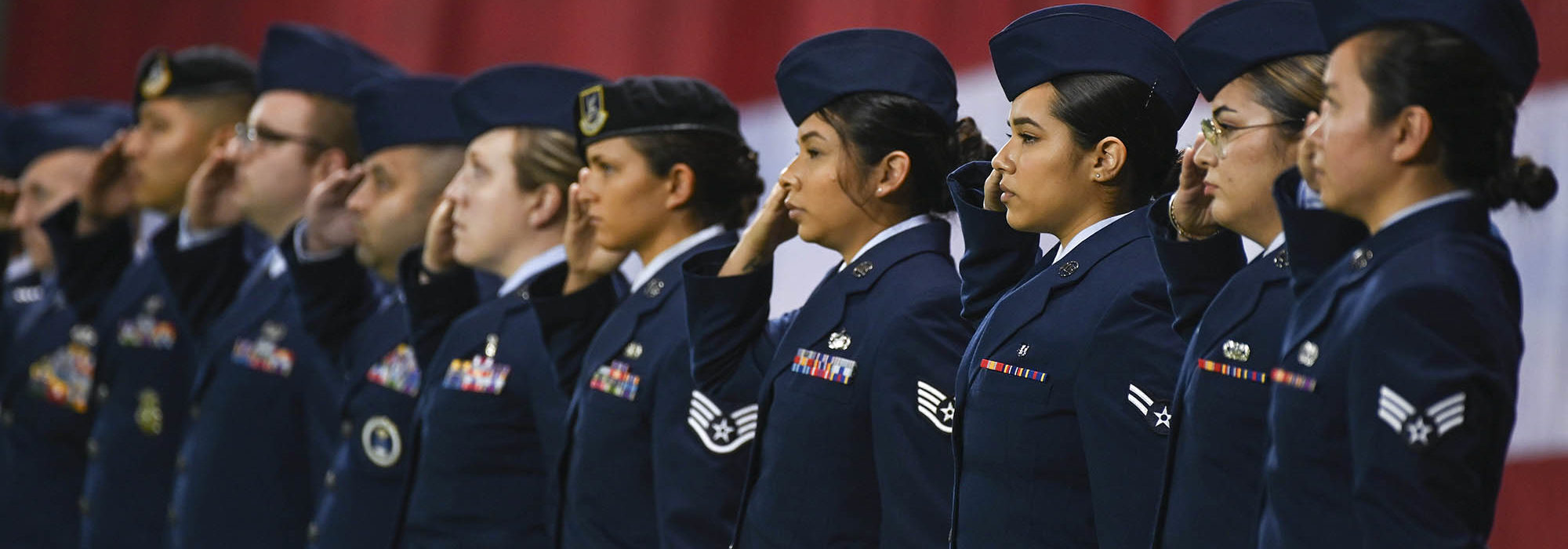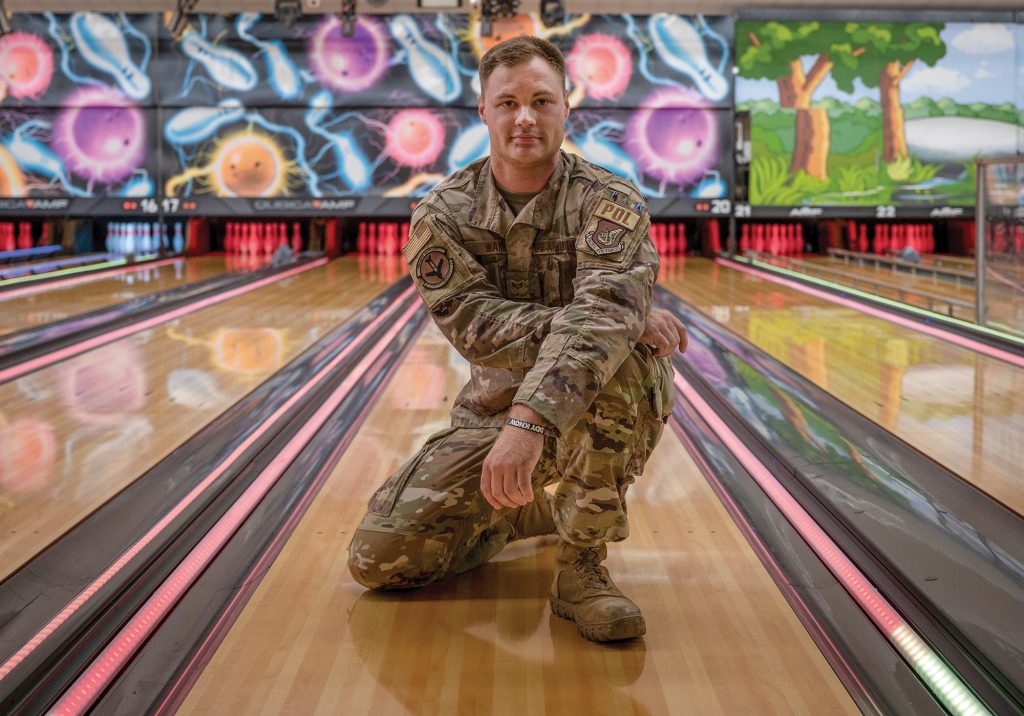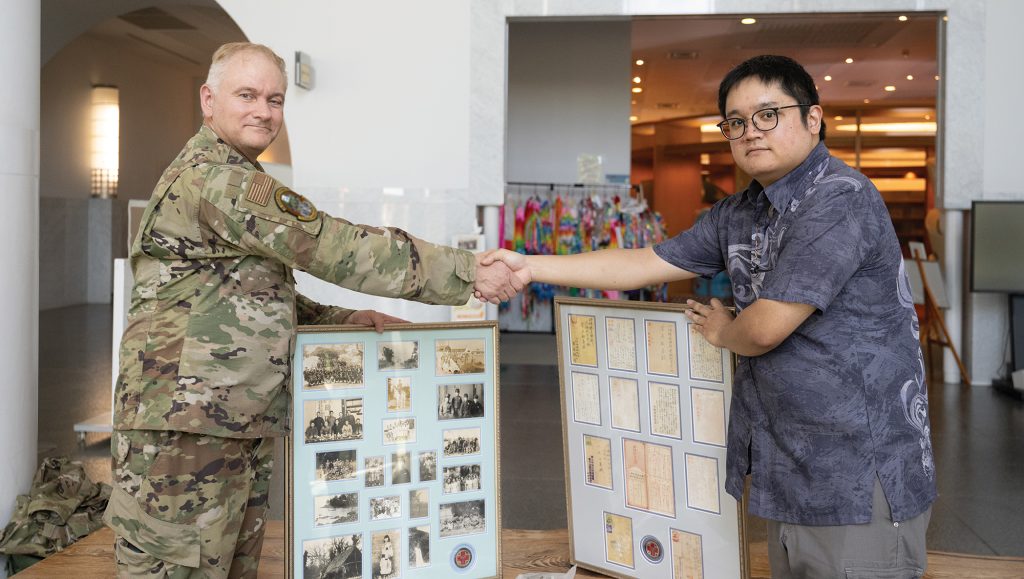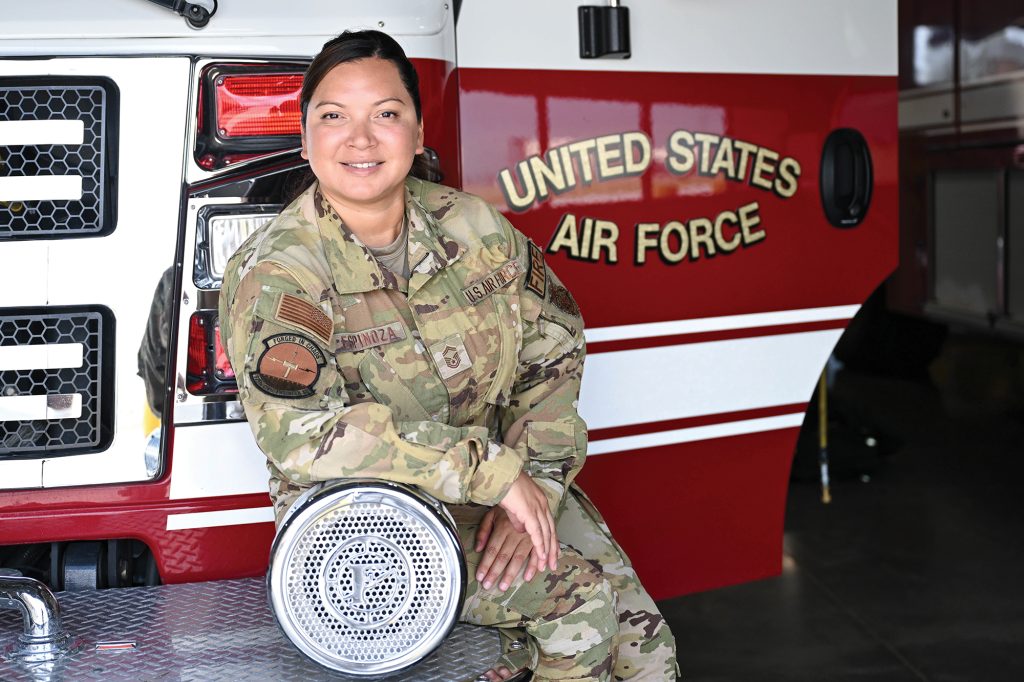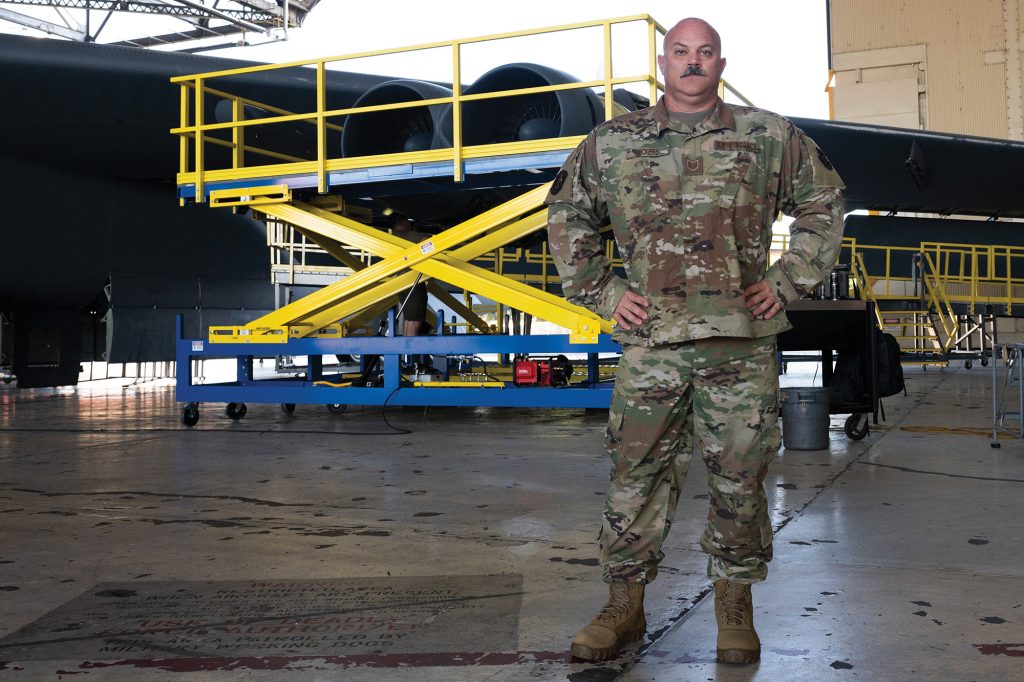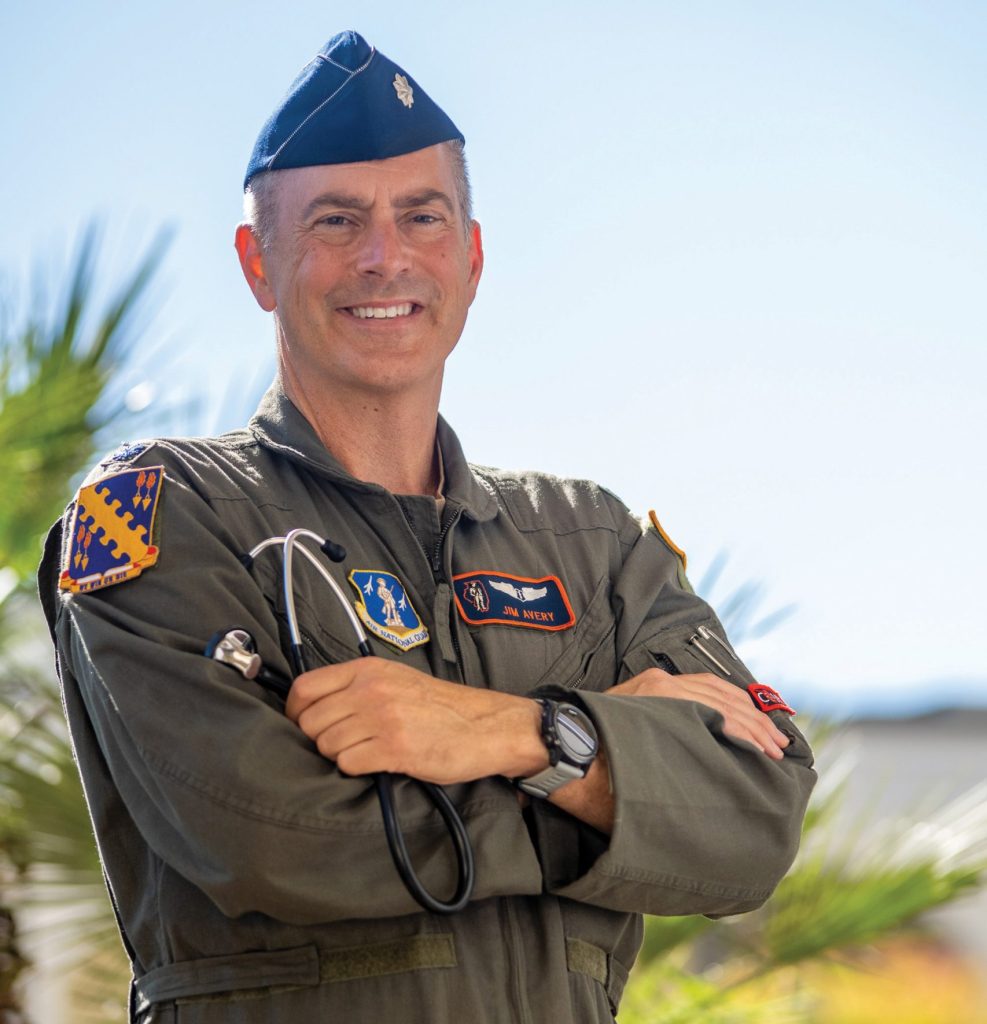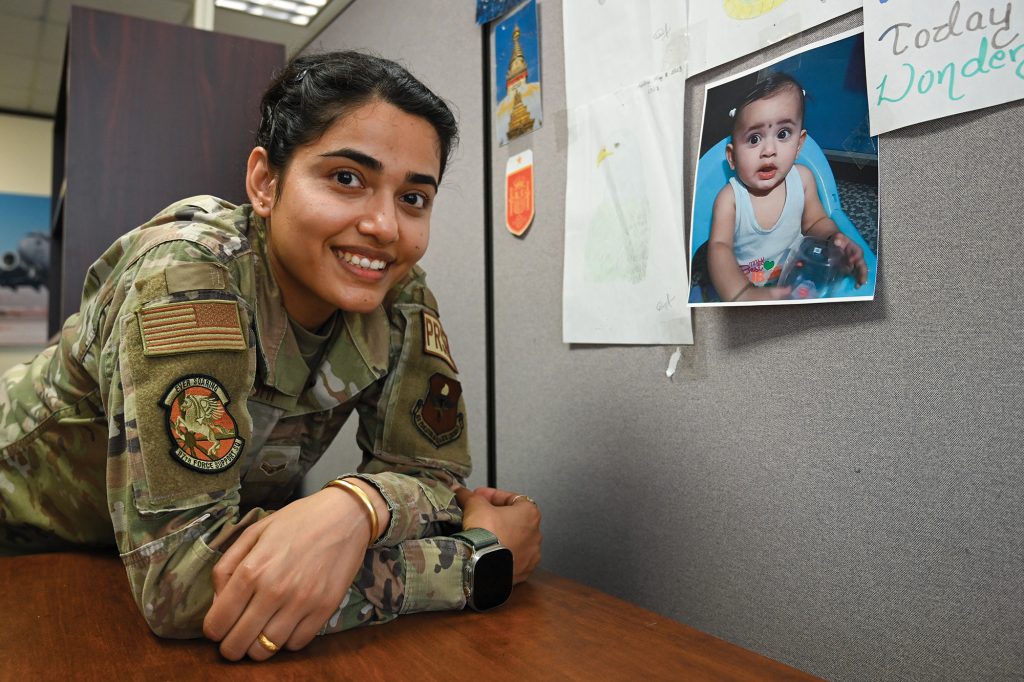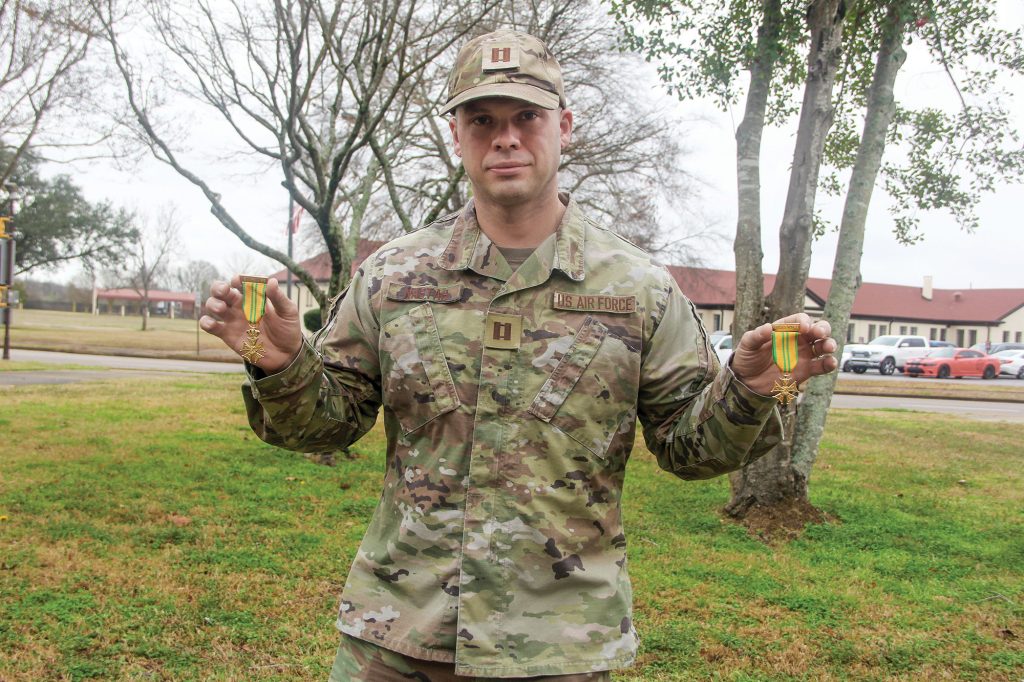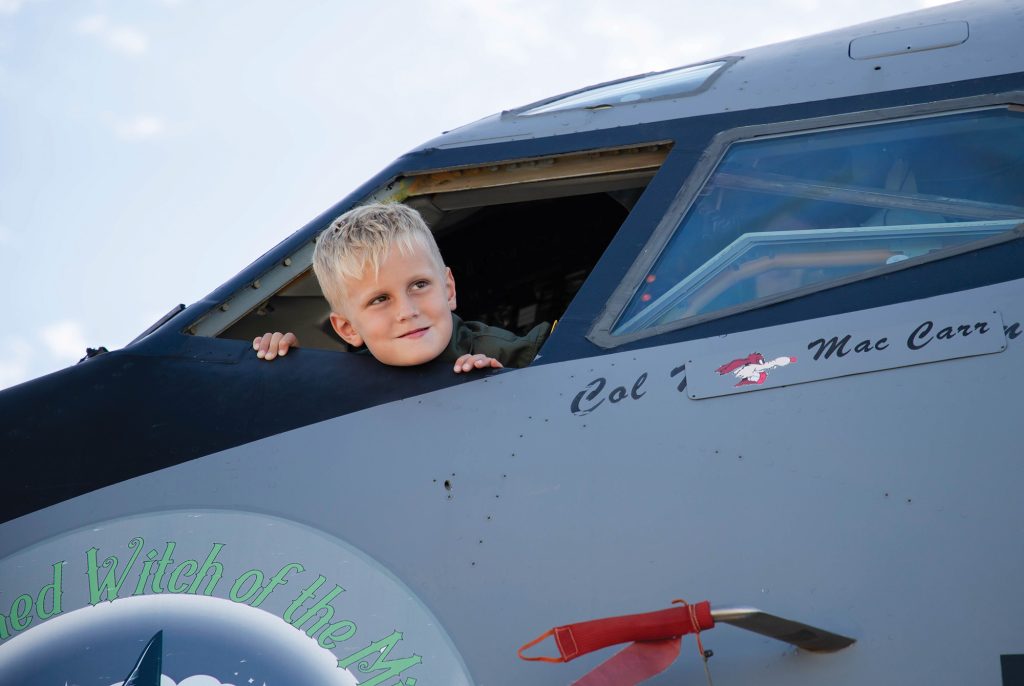Tell us who you think we should highlight here. Write to airandspaceforces@afa.org.
Senior Airman Malachi Ward of the 51st Logistic Readiness Squadron saved a choking child while bowling. When the child’s older brother alerted Ward, he performed the Heimlich maneuver and cleared the obstruction from the child’s throat. He drew from his training in Tactical Combat Casualty Care and Red Cross classes to handle the situation. “I didn’t second-guess what I was doing. I was relieved that I was able to help avoid a dire situation,” said Ward. As a new father with a 3-month-old son, he believes every service member should regularly practice cardiopulmonary resuscitation, TCCC, and first-aid skills.
California Air National Guard Lt. Col. Patrick Cichon discovered his father’s World War II Japanese artifacts in an old trunk. These items, preserved by his father, U.S. Marine Corps Sgt. Casimir Joseph Cichon, during the Battle of Okinawa, were intended to be returned to Japan. Cichon, who is active in the Japanese-American community through his local nonprofit, felt compelled to repatriate these artifacts. He brought the items to Japan and collaborated with local museums to identify and distribute all the artifacts—a sack, a handkerchief, a towel, photos, and letters—to the appropriate Japanese institutions, including Okinawa Prefectural Peace Memorial Museum. Cichon said, “My father preserved them on the battlefield so that today, we could return them to their rightful country.”
Hill Air Force Base’s Chief Master Sgt. Vanessa Espinoza made history as the first female Active-duty fire chief. Her 20-year Air Force career, driven by a passion for firefighting, has seen her overcome many challenges in a male-dominated field. A pivotal moment during deployment to Kuwait has taught her that true leadership involves navigating obstacles and finding solutions. When a 15,000-square-foot warehouse caught fire, she chose defensive firefighting over property salvage, emphasizing the importance of protecting lives. Espinoza is focused on mentoring future firefighters and inspiring the next generation, regardless of gender. She also plans to write a children’s book.
Tech. Sgt. Jeremy Vickers of the 307th Bomb Wing is the creator of the Engine Pod Stand, which has significantly improved efficiency for B-52 maintenance. The stand was first put to use in July during a B-52 Phase inspection at Barksdale AFB, La.,—previously a weekslong process requiring dozens of maintainers to work on the bomber simultaneously. The old maintenance stands from 1994 supported only two people at a time, delaying the inspection process and posing safety risks. Vickers’ new design features a large, single platform that allows multiple maintainers to work safely. “We’ve already halved the engine-top inspection time,” said Vickers. Development was challenging due to funding issues, but Vickers secured National Guard and Reserve Equipment Appropriations funding.
Lt. Col. Jim Avery is the definition of a man of many hats. After practicing medicine for 20 years, he joined the Illinois Air National Guard in 2010 and became a flight surgeon four years later. Passionate about health care, Avery leverages his extensive experience across multiple roles. He’s the Chief of Aerospace Medicine with the 126th Air Refueling Wing. In his civilian life, Avery is a board-certified internist and bone specialist at Washington University’s Bone Health Program. He also works full-time with the 375th Medical Group at Scott AFB, Ill., providing similar care in his Air National Guard role. “I enjoy all my jobs,” said Avery. “But if you ask me on the street, … I’m a flight surgeon in the U.S. Air Force.”
Airman 1st Class Benja Rayamajhi of the 97th Force Support Squadron left Biratnagar, Nepal, in 2022 for a better life in the U.S. for herself and her young daughter, despite the heartache of leaving her daughter in Nepal. Upon arriving in Tucson, Ariz., she faced challenges, including a language barrier and difficulty finding fulfilling work, even with a business degree from home. After consulting with a recruiter, she joined the Air Force, which allowed her to pursue U.S. citizenship and eventually bring her family to the country. Although the separation from her daughter was “the hardest thing” she had ever done, Rayamajhi knew each step brought her closer to reuniting with her.
Imagine walking 100 miles over four days with a weighted backpack—that’s the Nijmegen International Four Days March, a grueling rucking event held annually in the Netherlands since 1909. Air Force Capt. Alexander Nastas of the 97th Force Support Squadron began rucking while stationed in Germany, aiming to complete this march. Last year, he participated with 450 U.S. troops and completed the challenge. Nastas stresses extensive training for the march, similar to marathon training, to build physical and mental strength. With proper preparation, he encourages others to participate, calling it “a great way to learn about yourself” and “a great bonding experience.”
Mac Carr, a 7-year-old visually impaired boy, had an extraordinary day with the 190th Air Refueling Wing, Forbes Field ANGB, Kan., experiencing aviation through sensations of touch and sound. As a Coyote pilot for the day, he began by exploring a KC-135 Stratotanker, feeling its wings and cockpit controls. Mac grew excited as he engaged with the aircraft. He got to activate fire truck sirens and try on firefighting gear. A surprise tour of T-38 Talon fighter jets allowed him to feel the roar of the engines and the rush of wind from a special takeoff. Mac ended his day simulating an in-flight refueling mission with the Boom Operator Simulation System, feeling like a true aviator. Nicole Carr, Mac’s mother said, “These people all had a lasting impact on our lives, and we are forever grateful!”
